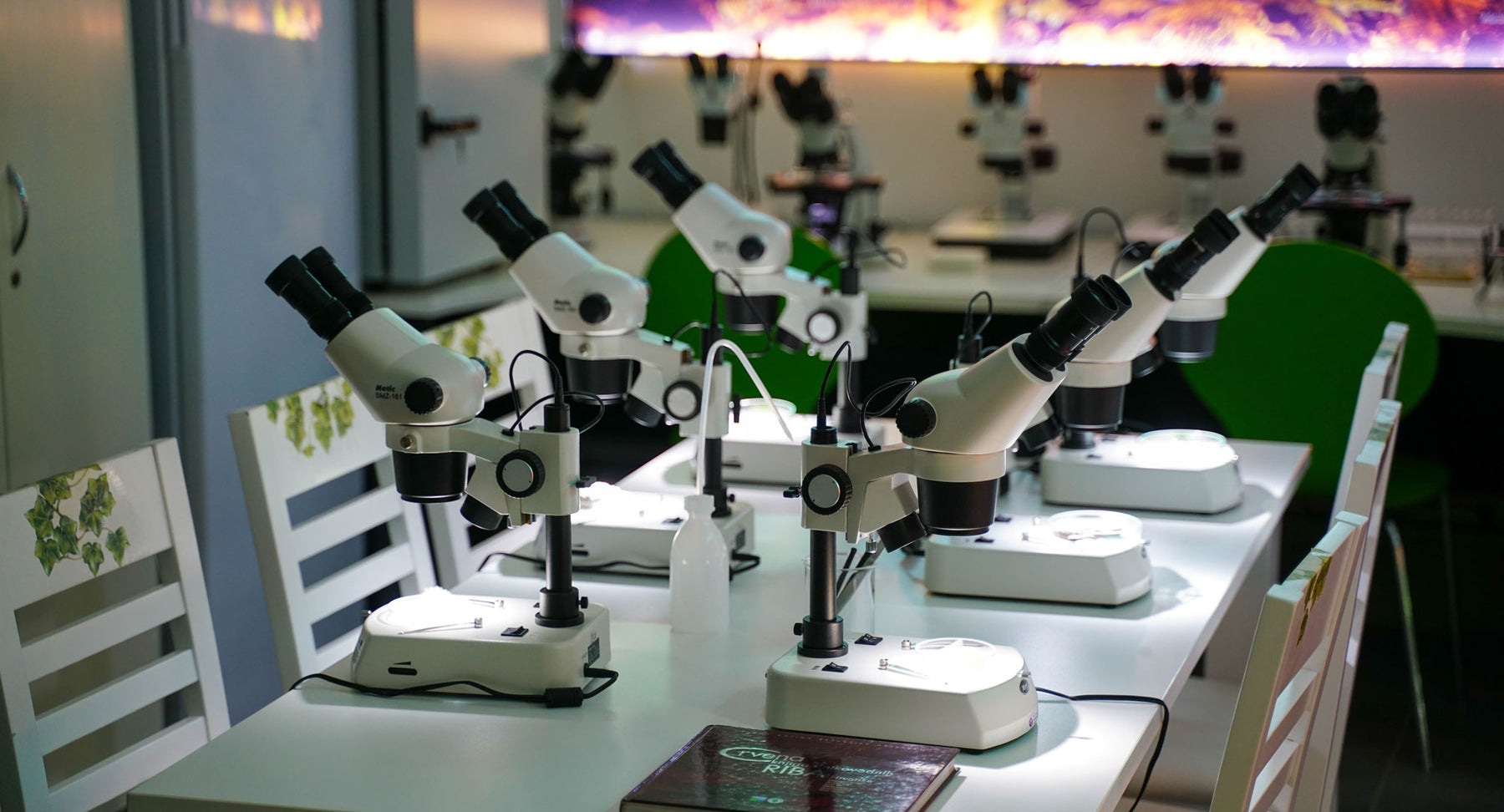
What’s the difference between stereo and biological microscopes?
Do you know the difference between stereo and biological microscopes (also known as compound microscopes)?
Don’t fret if it sounds confusing. They’re just two distinct types of microscopes, and it’s easy to decide which one you’ll need.
What’s the difference?
Stereo and biological microscopes might seem similar – they’re both optical light microscopes – but they’re actually designed to explore different things.
Stereo microscopes are used to look at larger things you can hold in your hand – insects, rocks, leaves, circuit boards or stamps.
On the other hand, biological microscopes are designed to let you see exceptionally tiny samples – such as bacteria or cells – that you can’t usually see with the naked eye.
There are, of course, some other important differences that we’ll go into below.
Stereo microscopes
Stereo microscopes (also known as dissecting microscopes) are a popular choice in a wide variety of professions, sciences and hobbies due to their versatility, practicality and unique features.
While they have a lower range of magnifications (often only up to 45x), they offer a variety of other features that more than compensate for it.
Unlike biological microscopes, stereoscopes give you plenty of room to play around with your specimens, making them perfect for hands-on tasks like inspecting, dissecting, mobile phone repair or as a soldering microscope.
They also have the unique ability to display the image in 3D – a picture that appears to have height, width and depth. As each eyepiece has a slightly different optical pathway, they work together to create an enhanced sense of depth perception.

Stereo microscopes are also easy to use (no sample preparation required), making them a great option both for educational settings and younger students.
Biological microscopes
You might recognise a biological (‘compound’) microscope as the more traditional type of microscope – typically three to five lenses and a turret (rotating nosepiece).
An essential scientific instrument, they’re used to explore minute samples. What can you see with a biological microscope? Well, almost anything you can fit on a slide – all types of plant and animal cells, including human hair, blood or skin, yeast cells, moss, algae or chlorophyll, to name a few.
You’ll find biological microscopes in a variety of settings – from research labs and vet clinics to breweries and wastewater plants.
They have an impressive range of magnifications – generally from 40x to 1000x – giving you a detailed look at individual cells and microorganisms.

Using a biological microscope is admittedly more complex than using a stereo microscope.
For instance, your samples must be pre-prepared and placed on glass slides before viewing them. Samples also have to be transparent to allow light to pass through, meaning you have to slice larger specimens into thin sections.
You can, however, buy inexpensive prepared slides to skip most of the hassle, and you can even find educational microscopes that come with labels and colour-coding for ease of use.
Before purchasing a biological microscope for a child, be aware that beginners might also need help to adjust the focus, magnification and lighting.
Despite the slight learning curve, don’t let this small challenge hold you back! Biological microscopes are a phenomenal tool that will open your eyes to a whole new microscopic world.
Remember, whether you choose a stereo or biological microscope, both are great options – provided you think about what you’ll be looking at before purchasing.
